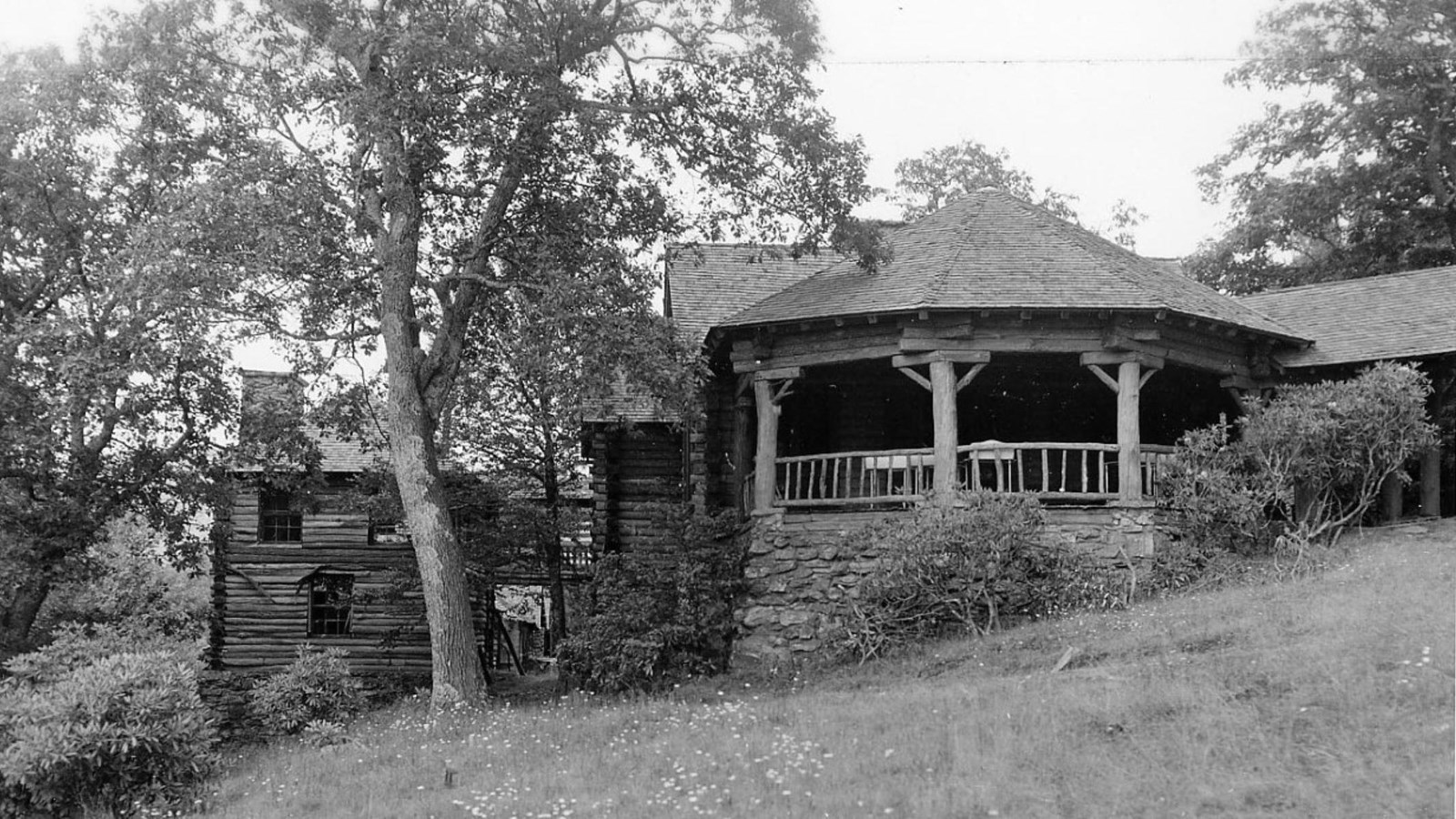Last updated: November 1, 2024
Place
Buck Spring Lodge

NPS Photo / Earl W. Estes, Jr. and Garrett A. Smathers
Benches/Seating, Historical/Interpretive Information/Exhibits, Scenic View/Photo Spot, Trailhead
The buildings may be gone now, but in 1896 this was the site of the newly constructed Buck Spring Lodge. Boasting views of Mount Pisgah and the surrounding valleys, this was the ideal location for George Vanderbilt to build his summer hunting lodge.
The term “hunting lodge” conjures up images of rough-and-rustic living. Buck Spring Lodge was anything but. Designed by the same company that had just completed the Biltmore Estate, Vanderbilt’s summer getaway was a grand affair. Made of rot-resistant American chestnut, it was inspired by the Adirondack camps of the day. Not only was the Main Lodge two levels with several rooms, it had a covered walkway to the adjacent Midway Cottage and the separate Dining-Kitchen building. Staff had their own quarters near the entrance. There was an orchard, beehives, livestock, a garden, and the grounds were kept trim by an entire team. An entire team of sheep, that is!
Of course, if you’re going to be entertaining guests such as the Secretary of War, the Secretary of Agriculture, and the Secretary of the Interior like Vanderbilt did, then your lodge has to be comfortable as well as manicured. By 1912, comfort had come in the forms of electricity, indoor plumbing and hot water, telephone service, tennis and croquet courts, and even an ice house.
Vanderbilt stocked the forests surrounding Buck Spring with deer, bear, and turkey. The streams were stocked with fish. Some of their descendants are still roaming around today! After a day’s hunting, hiking, or playing on the tennis court, guests would return to freshen up and don formal attire for dinner.
There were several ways to get to the lodge, including riding horseback from the Biltmore Estate in Asheville on the Shut-In Trail. Named “Shut-In” for the enclosed feeling of the surrounding rhododendrons, it traveled roughly 16 miles from the French Broad River along the ridge line to the lodge. Today, it has been incorporated into the Mountains-to-Sea Trail. But riding horseback isn’t always the most comfortable way to travel. Starting in 1910, guests with automobiles could drive up in style, using a single lane road that later became NC 151.
After George Vanderbilt’s death in 1914, his wife Edith would continue to use Buck Spring Lodge as a gathering place for family until her own passing in 1958. Soon after, the lodge was sold to the State of North Carolina. The State then transferred the land to the U.S. Department of Interior so that construction of the Blue Ridge Parkway could continue through the area.
Unfortunately, the buildings of Buck Spring Lodge were removed or knocked down. While the National Park Service might have preferred to keep the lodge intact, there were several reasons why this was impossible, ranging from the cost of upkeep and renovations to the inability to staff the lodge. The remaining buildings were demolished in 1961.
Today you can walk the grounds of the old lodge site and imagine what it would have been like to live like the Vanderbilts did. More than a hundred years later, you can still experience the fantastic views, cool summer breezes, and stunning fall colors. An information sign highlights the area's history and gives a site map. Access to the lodge is a short walk from the Buck Spring Gap Overlook or a 1.1 mile hike from the Pisgah Inn.
Check the conditions of the area before you visit.
